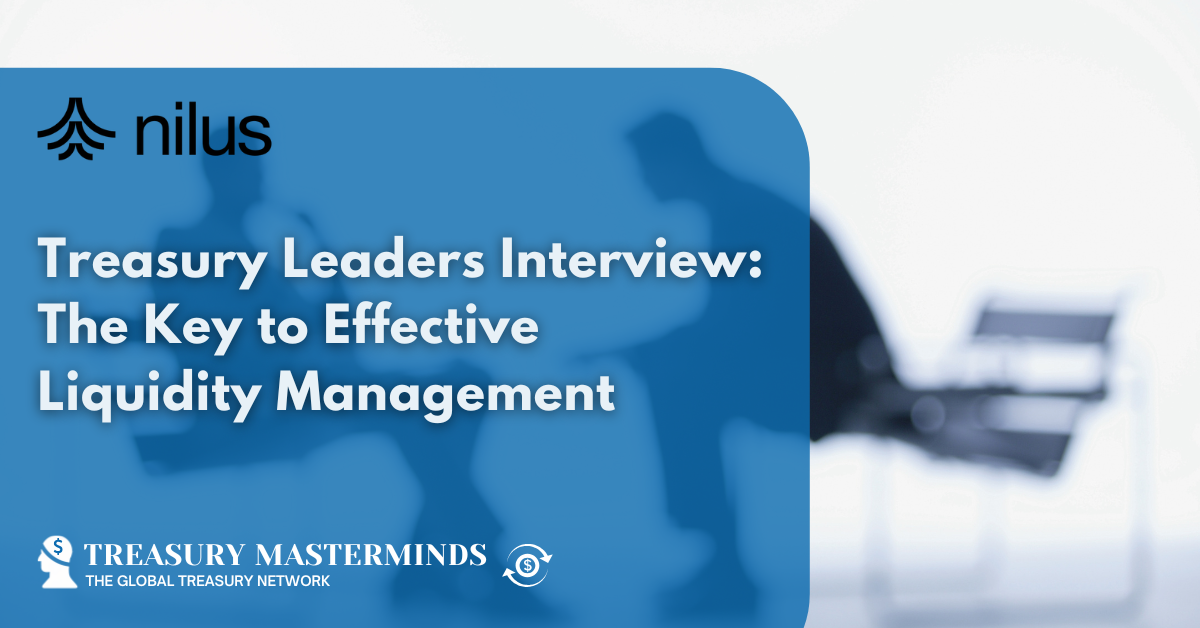
Build vs. Buy. What is the right path for treasurers investing in new tech?
This article is written by Palm Treasurers who have the budget and resources to implement a treasury system should view this as an opportunity to leave their legacy. A successful implementation creates a more effective and happier team that can manage treasury operations efficiently. We all know the negative effects a poor system implementation can have on a team. That’s why dedicating time to find and plan the right solution for your business is crucial for success. The first major decision point is whether to build a custom solution in-house or partner with a suitable treasury SaaS provider to do the heavy lifting. This blog explores tips to help you decide, along with important considerations you may not have thought of before deploying your hard-won tech budget. The Problem: What Are You Trying to Solve? Let’s start by defining the scope of the project. Is the primary goal of the software to automate cash forecasting, reduce risk, or simply to streamline operations? A well-selected solution should directly address the challenges you’re facing. Are your challenges commonplace in the treasury industry and likely to be addressed by off-the-shelf software, or are they more bespoke? A treasury Saas solution can connect to your banks and offer pre-built features for cash management, liquidity forecasting, reconciliation, and bank account management, providing a quick path to operational improvements without the need for complex custom development. However in complex organisations, specifically those with a web of intercompany relationships, regulatory requirements and policies a custom built solution may be the only way to achieve the outcome you need. A simple tool you can use to prioritise your scope requirement is the The MoSCoW Method commonly used by product managers developing new software. The Resources: What Do You Have Available? When deciding whether to build or buy, you must evaluate the resources your team has at its disposal. This includes your budget, timeline, technical expertise, and the internal capacity to either develop or implement a new system. Key Factors to Assess: When answering these questions don’t just think about your state of play in the business right now. As this is a long term investment you need to consider where to business will be in 5 or 10 years time. In a large enterprise, budget squeezes are common to achieve shareholder targets, headcount today may not mean headcount tomorrow. The commitment of maintaining an in house solution in the long term maybe a challenge. Similarly in a fast moving company, changes of direction and priorities could similarly divert budget and resources elsewhere. Consider these possibilities when making your final decision to set up your team for the best possible outcome in the long term. The Cost: What’s the ROI of Building vs. Buying? Cost is one of the most important factors in deciding whether to build or buy your treasury solution. Consider the upfront costs, ongoing maintenance, and long-term ROI of each option. Key Questions to Ask: Example Scenario: Building vs. Buying Here’s how the costs can compare: Buying an out-of-the-box SaaS solution usually results in a faster ROI. You’ll also benefit from built-in customer support, ongoing updates, and no hidden costs for software enhancements. Plus, since the solution is subscription-based, you’ll have more flexibility to scale up or down as your needs change over time. The Verdict: Build or Buy? When choosing between building a custom solution or buying an off-the-shelf SaaS treasury software, the following factors should guide your decision: Build In-House if: Buy an Out-of-the-Box SaaS Solution if: Frameworks to Help You Decide Consider using the following frameworks to make your decision clearer: Wrap Up The choice between building or buying cash management software is a critical one, and it ultimately depends on your organisation’s needs, resources, and long-term objectives. If you require a customised, specialised solution that addresses unique business needs and have the internal resources to manage it, building may be the best option. However, for most treasury teams, buying an out-of-the-box SaaS solution offers a more efficient, cost-effective, and scalable alternative that can deliver immediate value, reduce complexity, and allow your team to focus on strategic decision-making. Also Read Join our Treasury Community Treasury Masterminds is a community of professionals working in treasury management or those interested in learning more about various topics related to treasury management, including cash management, foreign exchange management, and payments. To register and connect with Treasury professionals, click [HERE] or fill out the form below. Notice: JavaScript is required for this content.

Treasury Leaders Interview: The Key to Effective Liquidity Management
This article is written by our content partner, Nilus A Conversation with Kaseya’s Director of Treasury, Devin Scott As someone who’s spent his career in treasury operations, I’m always eager to learn how other leaders think about liquidity management. Recently, I had the chance to sit down with Devin Scott, Director of Treasury at Kaseya, to discuss how he approaches one of treasury’s most critical functions: managing day-to-day liquidity while minimizing risk. What I love about these conversations is how they reveal the evolving complexity of modern treasury operations. Let me share some key insights from our discussion that I think every treasury professional should consider. 1. The Foundation: Getting Your Daily Liquidity Right When I asked Devin about ensuring efficient daily liquidity management, his answer resonated deeply with my own experience: “A bottom-up view of transactions expected to hit your accounts is crucial,” he explained. “Where this isn’t possible, assumptions can be made based on actuals and other longer-term inputs, such as FP&A expectations and market trends.” This is something I’ve seen repeatedly in my work with high-growth companies – the best treasury teams don’t just look at the numbers, they build relationships across the organization. As Devin puts it: “Building relationships with teams whose inputs significantly impact cash fluctuations—like Payroll, Collections, AP, Tax, and others—is essential.” 2. The Art of Building an Effective Liquidity Structure One of my favorite insights from our conversation came when discussing the key factors for setting up an effective liquidity structure. Devin outlined three critical elements: These might sound straightforward, but the execution is where many companies struggle. As Devin notes, it’s about being proactive: “You need to plan for debt payments, large tax payments, payroll payouts like bonuses and commissions.” 3. Handling the Unexpected Perhaps most valuable was Devin’s perspective on navigating unexpected changes in liquidity needs. He shared a particularly insightful example: “An acquisition or strategic transaction can sometimes come unexpectedly. Depending on your organization’s cash structure, you might need to review your maturing investments to confirm whether you have sufficient cash on hand to execute.” But what about when you’re facing a cash crunch? Devin’s practical advice hits home: “If your organization has limited cash and equivalents—perhaps collections are falling short of the plan—you may need to navigate a cash low point. Delaying AP while managing vendor relationships and exploring short-term credit options, like revolvers, can help maintain liquidity.” 4. The Technology Factor One area where I was particularly curious about Devin’s perspective was the role of technology in modern treasury operations. His view aligns closely with what we’re building at Nilus: “Technology and automation can be very useful when it comes to liquidity management. Tools that automate the mapping of actuals and set forecast inputs based on those actuals save significant time when building cash positions or forecasts.” What I found especially interesting was his perspective on TMS solutions: “From my experience with various tools, including legacy TMS providers, they can provide value through immediate actuals mapping and robust controls that improve efficiency and oversight. However, legacy systems can fall short when it comes to unique or evolving needs.” This is exactly why modern treasury teams need solutions that combine the robust functionality of a TMS with the flexibility of Excel-like workflows. The ability to collaborate in real-time, leverage AI for automation, and adapt quickly to changing requirements has become essential for today’s treasury operations. Looking Ahead As we wrapped up our conversation, one thing became clear: the role of treasury is becoming increasingly complex and strategic. The days of pure cash management are behind us. Today’s treasury leaders need to be technologically savvy, relationship-focused, and always prepared for the unexpected. More from Nilus Join our Treasury Community Treasury Masterminds is a community of professionals working in treasury management or those interested in learning more about various topics related to treasury management, including cash management, foreign exchange management, and payments. To register and connect with Treasury professionals, click [HERE] or fill out the form below. Notice: JavaScript is required for this content.

Why your risk management system might be sabotaging your business
written by Jeroen Overmaat with his background of Sales at Kyriba Amsterdam, July 28, 2025 Most treasury systems are digital scorekeepers. They track what happened, calculate some numbers, and generate reports. But here’s the uncomfortable truth: tracking risk isn’t the same as managing it. Your current risk management platform probably falls into this trap. It tells you about problems after they’ve already cost you money. It creates beautiful dashboards showing yesterday’s volatility. And it generates compliance reports that make auditors happy but don’t actually improve your business outcomes. The gap between risk tracking and risk management has never been wider. Companies are drowning in data but starving for insight. The scorekeeper problem Traditional treasury systems solve only part of the risk equation. They track transactions, value positions, and generate accounting entries. They don’t improve your risk programs. This creates a dangerous illusion of control. You have visibility into your exposures, so you assume you’re managing risk effectively. But visibility isn’t management. It’s just expensive record-keeping. Consider the 2008 financial crisis. Firms with basic tracking systems collapsed under pressure. Companies with proper hedging, diversification, and real-time monitoring emerged stronger. The difference wasn’t luck. It was the gap between scorekeeping and strategic risk intelligence. Risk isn’t an abstract concept. It’s the hidden variable shaping every financial decision your company makes. Some businesses use risk management to adapt and grow stronger. Others ignore it and become cautionary tales. What real risk management looks like Effective risk management requires five steps that most systems can’t handle properly. First, you need to identify existing risks through systematic assessment. This isn’t just brainstorming in quarterly meetings. It’s continuous monitoring across all business units, currencies, and market conditions. Second, you assess risks by understanding root causes and business impact. Not all risks are equal. A sudden credit downgrade isn’t the same as missing a loan payment. High-priority risks require immediate action. Third, you prioritize based on severity and urgency. Because it’s impossible to mitigate all risks simultaneously, smart prioritization becomes your competitive advantage. Fourth, you develop appropriate responses. Avoidance, mitigation, or acceptance. Each strategy requires different tools and different levels of automation. Fifth, you create preventive mechanisms for ongoing monitoring. Risk management isn’t a project with an end date. It’s an operating system that runs continuously. Most treasury platforms fail at step three. They can identify and assess risks, but they can’t prioritize intelligently or automate responses effectively. The daily rate complexity trap Here’s where things get interesting. Companies operating in daily rate environments face a particular challenge that exposes the limitations of traditional systems. Daily rate companies need automated daily exposure capture, real-time analytics, and frequent hedge adjustments. Manual processes simply can’t keep pace with market volatility. A company like Ecolab eliminated €40 million in FX volatility by moving from manual monthly processes to automated daily risk management. Single rate companies have different problems. They rely heavily on forecasting accuracy and periodic true-up adjustments. They need sophisticated scenario modeling and what-if analysis capabilities. Most treasury teams are stuck managing mixed methodologies across different entities. This creates operational complexity that traditional systems can’t handle elegantly. You end up with multiple point solutions, manual workarounds, and gaps in coverage. The result? Treasury teams spend their time processing data instead of managing risk. Beyond tracking to intelligence The most effective tools combine AI-driven analytics, integrated financial modeling, and automated compliance tracking. However, the key differentiator is platforms that provide complete back-office risk automation rather than just tracking capabilities. Leading solutions offer embedded risk analytics that capture, normalize, and quantify risk across multiple asset classes (FX, interest rates, commodities) while enabling automated hedge execution and accounting entries. Look for platforms that integrate pre-trade exposure analysis with post-trade position management and hedge accounting. They capture, normalize, and quantify risk across all business units simultaneously. They enable actual mitigation instead of just measurement. This isn’t about having better dashboards. It’s about having systems that improve your risk programs through intelligent automation and decision support. Companies report quarterly risk reduction savings, automation cost savings and error reduction benefits. More importantly, they achieve earnings predictability and financial stability that supports strategic growth initiatives. The technology exists to move beyond scorekeeping. The question is whether your organization is ready to make the shift. Leading tools feature embedded risk analytics, automated hedge accounting, and complete back-office automation. The leadership challenge Effective risk management requires active senior leadership involvement. Executives need to understand that risk management isn’t a defensive strategy. It’s a competitive advantage that creates stability, protects investments, and identifies opportunities others miss. This means supporting teams with sophisticated platforms that provide actionable intelligence, not just data. It means embedding risk considerations into all business activities. And it means fostering a culture where risk awareness drives better decision-making. The ability to anticipate and control risk separates elite financial professionals from the rest. In finance, the cost of poor risk management isn’t just monetary. It’s reputational. How to bridge the gap? Treasury systems typically solve only part of the risk equation. They track transactions, value positions, and generate accounting entries. They don’t improve your risk programs. What I have learned in the past few months working for Kyriba and talking to prospects and customers and seeing the vendor selection first hand: Kyriba stands apart from other treasury risk management systems by delivering complete back-office risk automation and embedding risk analytics to capture, normalize, and quantify risk. This enables you to mitigate risk exposures and reduce volatility in your financial statements. The difference lies in the embedded approach. Instead of bolting risk analysis onto existing processes, Kyriba builds intelligence into every transaction. Pre-trade exposure analysis tells you about potential risks before you create them. Automated hedge effectiveness testing runs continuously in the background. Real-time position management adjusts as market conditions change. This integrated approach handles the complexity that breaks traditional systems. Multi-currency exposures across different rate methodologies. Automated accounting entries that comply with IFRS9 and ASC 815. Comprehensive audit trails that satisfy regulators without creating administrative burden….

Toughening Up on Late‑Payment Laws: A Global Shift in SME Protection
From Treasury Mastermind Governments around the world are increasingly stepping in to curb long‑standing corporate practices of stretching payment terms—often at the expense of small and medium‑sized suppliers. A recent UK announcement outlines plans for “the toughest late‑payment laws in the G7,” setting maximum B2B payment terms at 60 days (with a phased move to 45), mandating interest on overdue invoices, and giving regulators the power to issue multimillion-pound fines. Audit committees will also be legally required to oversee supplier payment practices at board level. This follows earlier European Commission proposals to revise the Late Payment Directive, with ideas such as a 30‑day payment cap under consideration. While initial pushback led to further consultation, the direction is clear: long payment terms are under scrutiny, and legislative momentum is building. Why This Matters for SMEs & Corporates Bridging the Power Imbalance Large corporations often negotiate payment terms of 90–120 days or more, leveraging their bargaining power. SMEs, lacking that leverage, are left to absorb the strain. These reforms aim to level the playing field, helping small suppliers maintain liquidity and avoid the knock-on effects of delayed payments. Working Capital Fallout For corporates, long payment terms have historically served as a cheap form of working capital. But as regulation shortens these windows, buyers will see earlier cash outflows, putting pressure on internal cash management. On the supplier side, SMEs lose the flexibility of absorbing long waits for payment and may face cash flow issues that limit their ability to grow, invest, or even survive. Working Capital Solutions: Factoring, Reverse Factoring & More To deal with the stricter rules, both buyers and suppliers are likely to turn to alternative financing models: Factoring SMEs sell their invoices to a third party to receive immediate cash, reducing the cash flow burden of waiting for payment. While helpful, it can be expensive and is dependent on supplier creditworthiness. Reverse Factoring (Supply Chain Finance) Buyers use their own stronger credit rating to help their suppliers get paid earlier via a financing partner, while still maintaining longer payment terms from their own books. This can preserve working capital for both parties if structured correctly. Dynamic Discounting Suppliers offer discounts for early payment, and buyers can take advantage of savings while improving supplier relationships. Other traditional options such as overdrafts, credit lines, and invoice discounting also remain on the table, but the focus is shifting toward more digital and embedded finance options. Fairer, but Not Without Trade‑Off While it’s clearly fairer for SMEs, this regulatory shift introduces new challenges for corporates: Still, the broader benefit is a healthier and more predictable supply chain, with less disruption caused by late payments and bankruptcies. What Should Treasurers Do? In Summary Governments are putting late payments under the microscope—and rightly so. The goal is to create a more equitable environment for SMEs and reduce systemic financial risk. But for corporate treasurers, this means a shift in how working capital is managed. Stricter rules may cut into traditional levers like stretching payables, but the right combination of internal forecasting, financing tools, and supplier collaboration can soften the blow—and may even lead to more resilient supply chains. If you’re concerned about how upcoming rules could affect your cash position or payment policies, now is the time to act. Better to get ahead of regulation than scramble to catch up later. Also Read Join our Treasury Community Treasury Mastermind is a community of professionals working in treasury management or those interested in learning more about various topics related to treasury management, including cash management, foreign exchange management, and payments. To register and connect with Treasury professionals, click [HERE] or fill out the form below to get more information. Notice: JavaScript is required for this content.

Is Your Hedging Policy Sophisticated Enough for Today’s Markets?
This article is from our content partner, CorpHedge This year has been exceptionally marked by the weakness of the U.S. dollar. In the first half of this year, the trade-weighted U.S. dollar declined by more than 8%, marking the greenback’s worst mid-year performance in over 40 years. For me, this is a stark reminder that currencies can experience incredibly sharp trends. As long as we see range-bound markets, it’s easy to feel secure in a static hedging policy. But when a significant move occurs, it forces us to ask the tough questions: Is our policy good enough? Where can we improve? In my experience, CFOs and treasury professionals often fall into two camps: those who strictly adhere to a pre-defined policy regardless of market conditions, and those who take a more opportunistic, yet still risk-averse, approach. I’d like to analyze how we can build a better, more dynamic hedging policy. The starting point for any company must be a clear-eyed assessment of its own risk appetite. From there, we need to consider both internal and external factors. The internal, subjective factors include the company’s risk tolerance and the time pressure of its forecasted flows. For instance, a near-term payment for an acquisition carries immense time pressure, whereas a more speculative, long-term forecast has less urgency. Next, we must analyze the external market factors. When executing derivative transactions, we are dealing with financial markets shaped by a multitude of signals. For those of us aiming to hedge effectively, I believe a few are particularly critical to watch: 1. Valuation: What is the currency’s current value compared to its Purchasing Power Parity (PPP) level? While currencies are expected to revert to their PPP fair value over time, this correction can be very slow. A more useful concept for treasurers is the ‘half-life’ of the deviation. According to research by Craig (2005), this is the time it takes for half of the over- or undervaluation to disappear. His findings show that for major currencies far from their fair value, this process often takes about 12 to 18 months, giving us a more practical timeframe than just “the long run.” 2. Volatility: As risk managers, volatility is crucial. We should ask not only how current implied or realized volatility compares to historical levels, but also: What is the current volatility percentile? Is it unusually high or low? This context is key. 3. Interest Rate Differentials (Carry): This factor directly determines hedging costs, but its analysis requires nuance. From a classic Wall Street perspective, the carry trade involves borrowing in low-yielding currencies (like the JPY or, until recently, the USD) to buy higher-yielding ones (like the AUD or NZD). However, the recent environment has been unusual. The U.S. dollar, typically a funding currency, has acted more like a high-yielding one compared to the euro or yen. This created a powerful incentive for companies to leave their USD-denominated inflows unhedged, hoping to profit from the high yields and the belief that the dollar would only get stronger. But this strategy has a well-known vulnerability. During major risk-off events, like the 2008 financial crisis, these carry trades can unwind violently, leading to massive losses. This is why, as a risk manager, I argue against looking at interest rate differentials in isolation. A much more powerful metric is the risk-adjusted carry. This means we don’t just look at the yield pickup; we adjust it for the currency’s volatility. This leads us to the carry-to-risk ratio, often calculated by dividing the interest rate differential by 30-day volatility. A higher ratio suggests a more favorable risk-reward profile, while a lower ratio signals potential danger in a risk-off scenario. In my view, this is a far superior tool for cross-currency analysis. The Recent USD Story: A Perfect Storm At the beginning of this year, the USD was overvalued by about 32% according to PPP data. The context was a U.S. administration keen on reducing the trade deficit, implying a desire for a cheaper dollar. With this uncertainty, it was no surprise that volatility rose significantly. The currency was overvalued, and volatility was rising sharply—a classic recipe for a major downward move. PPP data at the beginning of the year (OECD): A recent paper from the Bank for International Settlements (BIS) confirmed what happened next: the dollar’s decline was accelerated by a rush to hedge. For a long time, the consensus view of USD strength, combined with low volatility and high hedging costs, meant many flows went unhedged. The BIS noted that Japanese life insurance companies, for example, had only hedged about 40% of their flows from 2021-2024. When they and others rushed to increase hedges in April, it triggered aggressive dollar sell-offs, creating a chain reaction that fueled the aggressive downward trend we witnessed. How to Build a Better Hedging Policy I believe that in this day and age, with data so accessible and technology so advanced, applying the same static hedging principles from 20 years ago is a mistake. We can and should be more sophisticated. This sophisticated approach involves building a framework that assigns weights to the key factors: fair value (PPP), volatility, and risk-adjusted carry. This model should also incorporate your company’s internal factors, like risk aversion and the time pressure of its cash flows. All of this can be consolidated into a scoring system. The output is a dynamic optimal hedge ratio that moves based on changing conditions. Instead of being fixed, your hedge percentage might increase or decrease from the static baseline required by your layering policy. This approach makes your policy more intelligent and precisely aligned with both market conditions and your company’s risk profile. Under such a system, high-quality, up-to-date data becomes paramount. By adopting such a dynamic method, a company can significantly enhance its hedging policy, allowing it to stay closer to the market while ensuring it remains protected from adverse financial impacts. Join our Treasury Community Treasury Mastermind is a community of professionals working in treasury management or those interested in…

GENIUS or Just Regulation? What the New U.S. Stablecoin Law Means for Treasurers
From Treasury Masterminds What is the GENIUS Act? The GENIUS Act—short for Guiding and Establishing National Innovation for U.S. Stablecoins—is the first standalone federal legislation in the U.S. to specifically regulate stablecoins. Introduced as Senate Bill S. 1582 in May 2025, it passed both chambers of Congress and was signed into law by President Trump in July 2025. Scope and Key Provisions What It Regulates—and What It Doesn’t Regulates: Does Not Regulate: Implications for Corporate Treasurers Stablecoins are increasingly seen as tools for instant settlement, cross-border payments, and liquidity efficiency. The GENIUS Act has several implications for treasurers considering or already using stablecoins in their operations. Pros Cons Final Take The GENIUS Act introduces a detailed framework for regulating payment stablecoins in the U.S., aimed at improving trust, transparency, and regulatory oversight. For corporate treasurers, it promises a safer and more compliant environment to explore the use of stablecoins in treasury operations. However, limits on issuer eligibility, the lack of yield, and a delayed timeline mean that adoption will remain gradual and cautious. Also Read Join our Treasury Community Treasury Mastermind is a community of professionals working in treasury management or those interested in learning more about various topics related to treasury management, including cash management, foreign exchange management, and payments. To register and connect with Treasury professionals, click [HERE] or fill out the form below to get more information. Notice: JavaScript is required for this content.